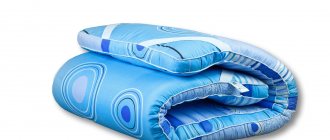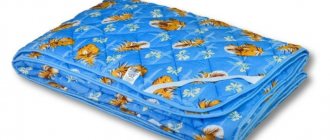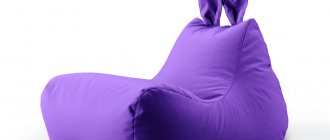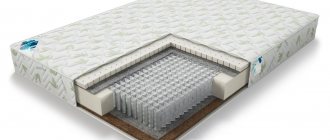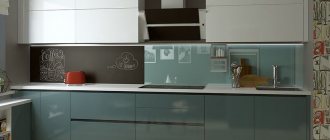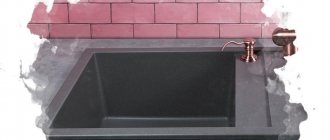Despite the abundance of fabrics with synthetic threads that have emerged as a result of new technologies in weaving, materials with natural fibers remain the best and most in demand. And one of the leaders is natural fabric - poplin, which deserves special attention.
A thin, dense thread is used for the warp and a thicker, coarse thread for the cross weft. The density of the warp is 1.5-2 times denser than in the cross weft. In this regard, the canvas has a texture with a light raised rib.
This reversible fabric is produced by a simple plain weave.
Origin of the fabric (History / Where it came to us from, what does the translation mean)
The first mention of poplin occurs in the 14th century. The technology for producing fabric was invented by French weavers specifically for clergy. The residence of Pope Clement V with his entire retinue at that time was in France in the city of Avignon. The name of the fabric was fixed from the French. Popeline, translated as “papal”. In Italian, a word with a similar sound is Papalino.
Initially, the fabric was woven from silk threads and it cost fabulous money. Later, silk thread was replaced with more affordable cotton thread.
Poplin manufacturing technology involves weaving threads of varying thicknesses.
In Russia, poplin appeared in the 18th century and was called “European calico.” Thin, soft natural material gained recognition in the market of that time.
Currently, poplin is produced almost all over the world. Weaving factories in Russia offer a wide selection of poplin.
What is poplin
Poplin fabric is formed by weaving a thin, dense warp with a coarse weft. The warp threads are thinner, but intertwined more tightly, so a small scar is formed on the surface.
To produce poplin, wool, silk or cotton are used, less often synthetic fiber. The finished fabric can be bleached or dyed.
Description of material characteristics:
- poplin density is 110–120 grams per square meter;
- hygroscopicity - absorbs moisture from the skin;
- crease resistance is achieved through special weaving;
- strength and durability;
- low maintenance requirements - can be washed and ironed at high temperatures;
- affordability.
The fabric is smooth to the touch, but not slippery. The size of the scar depends on the density of the weave of the threads. The fabric is pleasant to the body, but people with sensitive skin find it harsh. It retains its shape well, forms smooth folds, and drapes easily.
To view the fabric review:
History of fabric
The name of the material comes from the Italian word papalino, meaning “papal”. The fabric was first produced at the residence of the Pope in Avignon.
Since the 14th century, the fabric has been used to sew robes for the Pope and his entourage. Now matter is produced everywhere and has a wide range of applications.
The material appeared in Russia towards the end of the 18th century. The soft and durable fabric has gained popularity. They began to sew exclusively poplin dresses for women. This type of fabric used to be called "European calico".
Initially, the fabric was only silk. Cotton, blended and synthetic varieties gradually emerged. Silk has a high cost, synthetics have a low cost. It also has the worst quality.
How to choose material
To ensure that the item lasts a long time, choose high quality poplin. Criteria for correct selection:
- bright color of the canvas;
- if there is a drawing, then it should be clear, not blurry;
- if you squeeze the material in your fist and then release it, it will quickly return to its original shape;
- natural fabric is not electrified;
- When purchasing a finished item, you need to evaluate whether the seams and edges are carefully processed.
You should choose material from a reputable manufacturer. High-quality poplin is in the middle or high price category. Cheap fabric contains synthetics and will quickly lose its shape and color.
Types of poplin
Based on their composition, the following types of fabric are distinguished:
- cotton - pure cotton;
- synthetic, or polypoplin - 30–70% added lycra, polyester, elastane;
- macopoplin - contains only 20% synthetic additives;
- premium - wool and silk.
By color they are distinguished:
- bleached poplin - using alkali, the yellow or gray tint is removed, the canvas becomes perfectly white;
- plain-colored - first bleached and then painted in one tone;
- printed - with a pattern applied to the surface;
- variegated - the pattern is formed by using threads of different colors when weaving.
The pattern is applied to the material in different ways:
- With direct printing, the pattern is applied directly to the canvas.
- Etching printing - areas of fabric are dyed and then some of the dye is removed in a special way to create a pattern.
- During backup printing, a chemical composition is applied to the fabric to protect it from ink. After staining, the composition is removed.
According to its intended purpose, the fabric can be bed, dress, linen, or children's.
View this post on Instagram
Post from FABRIC TURKEY

